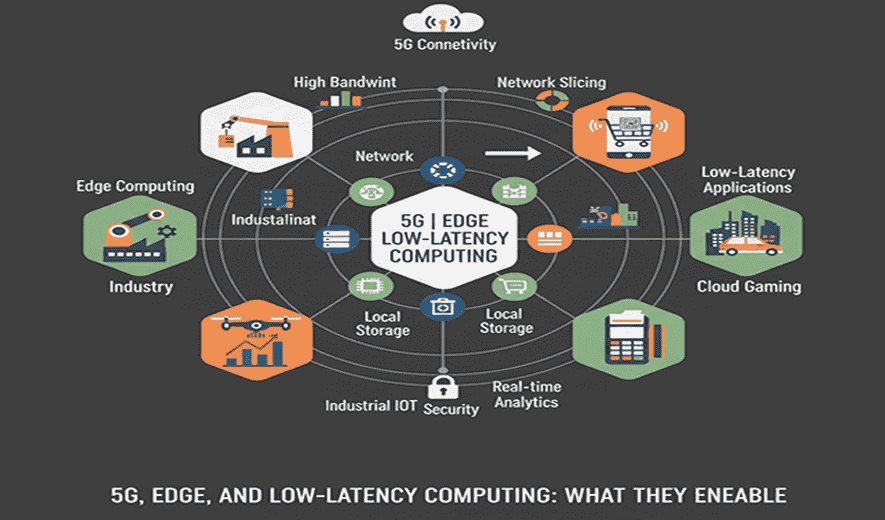
5G, Edge, and Low-Latency Computing: What They Enable
5G, edge, and low-latency computing are foundational technologies that, when combined, create a paradigm shift in how data-intensive, real-time applications are delivered. 5G provides the high-speed and reliable network connectivity, while edge computing processes data physically closer to the user or device. Low latency, the result of this synergy, is the essential characteristic that makes instantaneous, real-time response possible.
5G: The high-speed backbone
5G, the fifth generation of cellular networks, goes beyond simply being a faster version of 4G. Its key features create the necessary foundation for the edge computing revolution.
- High bandwidth: Enables the transfer of massive data volumes at multi-gigabit speeds, which is crucial for applications like ultra-HD video streaming and immersive AR/VR.
- Massive device connectivity: Supports millions of connected Internet of Things (IoT) devices per square kilometer, enabling large-scale deployments in smart cities and industrial environments.
- Ultra-reliable low-latency communication (URLLC): This is a key 5G feature that guarantees consistent and ultra-low latency, minimizing delay for mission-critical applications.
Edge computing: The distributed brain
Edge computing moves data processing and storage closer to the source of data generation, at the "edge" of the network, rather than relying on a distant central cloud.
- Localized processing: By processing data on-site using devices like edge servers or gateways, network traffic is reduced, freeing up bandwidth and enabling much faster local insights.
- Reduced network load: Less data needs to be sent back and forth to centralized data centers, which minimizes congestion on the network.
- Real-time intelligence: AI-ready compute power at the edge allows for instant analysis and decision-making, which is crucial for time-sensitive applications like autonomous vehicles or industrial automation.
- Enhanced security and privacy: Processing data locally reduces the risk of data being intercepted in transit and helps ensure compliance with data sovereignty regulations like GDPR.
Applications enabled by this synergy
The combination of 5G, edge, and low-latency computing powers a new generation of use cases across various industries.
Healthcare
- Remote surgery: A surgeon can control robotic instruments in a different location with minimal delay, enabled by 5G and edge computing for real-time video streaming and precise control.
- Real-time patient monitoring: Wearable and in-home devices transmit data instantaneously to healthcare providers, allowing for timely interventions and improving patient outcomes.
Manufacturing and industrial automation
- Predictive maintenance: Sensors embedded in factory equipment collect data that is processed at the edge to predict failures before they happen, minimizing downtime.
- Automated robotics: Enables robots to communicate and coordinate in real-time, improving the efficiency and safety of complex production processes.
Transportation
- Autonomous vehicles: Vehicles can process sensor data locally at the edge for split-second decision-making, crucial for safety and navigating changing road conditions.
- Smart city traffic management: Real-time data from city cameras and sensors can be processed locally to dynamically adjust traffic lights, reducing congestion and speeding up emergency response times.
Entertainment and consumer experiences
- Cloud gaming: Edge computing reduces the latency for cloud-based games, eliminating lag for a more responsive gaming experience comparable to local installations.
- Immersive AR/VR: The high bandwidth of 5G and low-latency processing at the edge deliver truly immersive and interactive augmented and virtual reality experiences.
Retail
- Personalized shopping: In-store sensors and cameras process data at the edge to analyze foot traffic and customize promotions, providing real-time recommendations to customers.
- Frictionless checkout: "Just Walk Out" technology relies on a combination of IoT sensors, 5G, and edge processing to automatically track and charge items, eliminating the need for a traditional checkout process.
